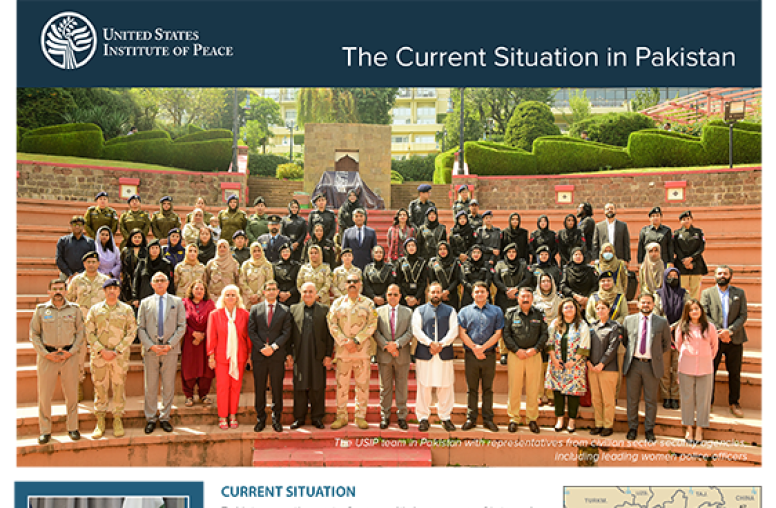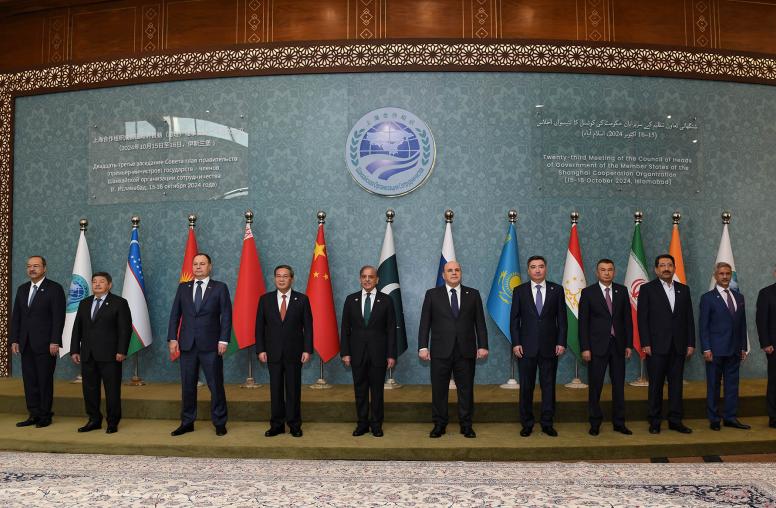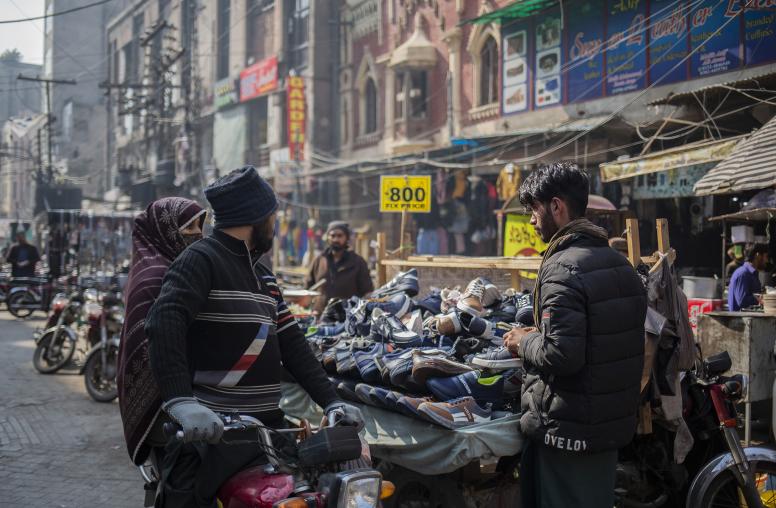Shameen, a ninth grade teacher in a low-cost private school in Islamabad, frequently turns around from the whiteboard to shout at the children for slouching and making noise. “Why are you smiling? Sit properly!” she calls out to one of the students. Holding a stick wrapped in tape, she asks students to open their hands and then smacks their palms several times whenever they fail to answer her questions correctly. This is an all too common scene from an average school in Pakistan—and sometimes it can be much worse.

Last September, a 17-year old student in Lahore, one of Pakistan’s largest cities, was beaten to death by his teacher for failing to memorize his lesson. This horrific incident highlights a key challenge to improving Pakistan’s education system, where corporal punishment is regularly used to discipline students.
Corporal punishment in schools is legally permissable in 69 countries, including the U.S. and Pakistan. While the U.N. has called corporal punishment a form of violence against children, teachers continue to use these tactics to maintan discipline and get students to do work, even where it is banned. In countries battling recurring cycles of violence, like Pakistan, comprehensive reform is urgently needed.
The detrimental effects of corporal punishment are well documented. It adversely affects a child’s willingness to go to school and usually has a negative impact on academic performance. In Pakistan, 44 percent of children between the ages of 5 and 16 are not in school and those who do attend have dismal learning outcomes. Corporal punishment only compounds the many challenges students face in receiving edcuation.
In addition to poor academic outcomes, overwhelming evidence has linked corporal punishment to mental health problems and behaviors that may lead to violent tendencies in adulthood. Corporal punishment in schools was the strongest predictor of depression among school children in a study in Hungary, and linked with greater hostility, pessimism, and depression in a 2011 study in Pakistan. Evidence shows corporal punishment in childhood also may lead to increased aggression and anxiety in adulthood, factors that increase vulnerability to radicalization.
Despite the abundant evidence of its negative effect on children, corporal punishment continues to be prevalent in Pakistan. A 2012 study found that physical punishment was used in 89 percent of public and private schools in Punjab, Pakistan’s largest province. In a 2014 study in Pakistan, over 70 percent of teachers agreed that corporal punishment is useful for disciplining students. "The thing is, the stick is useful because it scares the children into behaving,” said a sixth grade Pakistani teacher who recently took part in a USIP teacher training program.
While there have been some legislative attempts to address corporal punishment in schools, most have been ineffective. There is no clear-cut federal policy that outlaws the practice of corporal punishment within schools. Three of Pakistan’s four provinces—Punjab, Balochistan and Khyber Pakhtunkhwa—have no formal laws that criminalize the infliction of physical punishment on children by their teachers. Even with formal laws against corporal punishment in schools on the books, the practice still continues to be widespread and the majority of cases go unreported by parents because corporal punishment is deeply entrenched in the cultural norms of Pakistan.
Changing Teachers’ Mindset
Legislation alone is clearly not enough to effectively address corporal punishment in Pakistan’s schools. A main reason teachers use corporal punishment tactics is because they lack awareness of its detrimental effects and do not know of alternative methods for maintaining discipline and getting students to do work. Teachers who have been subjected to corporal punishment view it as useful based on their own experienes and are more likely to practice it with the next generation. Along with legal reform, initiatives that change perceptions of corporal punishment and interventions to equip teachers with alternative methodologies are needed.
USIP’s Pakistan team recently partnered with Saving 9—a local organization working to improve physical and mental health literacy in Pakistan—to change teachers’ views on corporal punishment through interactive trainings in five schools in Islamabad. These trainings were geared to fostering empathy among teachers for the challenges faced by their students. Teachers were asked to collectively explore how stress, trauma, identity, power and a biased understanding of the learning process shaped their behavior with children in the classroom and how aggressive behavior affects the mental health of children. The trainings also equipped teachers with practical tools and strategies to manage emotions, conflicts and behavioral and academic challenges without physical or emotional pain.
When asked about her learning insights from the project, Aaminah Tirmizi, Saving 9’s director of health initiatives, said: “Simply stating facts and statistics to teachers and administrations about the harm that can come from corporal punishment or harsh disciplinary practices seemed to not bring about change in perceptions or behavior that we were hoping for. What seemed to work was tapping into empathy, mindfulness and introspection on the teacher’s end.”
In interviews before the training, a majority of teachers mentioned hitting children with a stick as a frequently used disciplining strategy. Following the four-month project, significant changes in teachers’ attitudes toward disciplining, empathetic listening and teaching strategies were noted. The same sixth grade teacher who had said he found corporal punishment effective said after the training: “I learned that children learn better with softness and care. They learn quicker this way.”
For her part, Shameen also found the training to be transformative.“My attitude has changed. I used to hit a lot before. Now, I call them [students] to the office and listen to them. I try to be friendly … I feel the children are less scared of me. It’s been two months, I haven’t hit a child.”
What’s Next?
This pilot project offers important lessons and is a first step toward identifying practical alternatives to corporal punishment in Pakistan. Eradicating corporal punishment will necessarily need to go beyond legislation. Teacher training curriculum must include modules that build empathy while educating teachers on the link between corporal punishment and students’ mental health development. Further, the state must provide trainings on alternative disciplinary approaches to equip teachers with the necessary skills to replace corporal punishment. Trained teachers can then use platforms like Parent-Teacher Councils to inform parents of the danger of corporal punishment, compounding the impact of school-based interventions.
Underscoring the need for community mobilization, USIP Program Manager Imran Khan said, “I went to a public school while growing up in a peripheral town of the country. Corporal punishment was the norm. Once, my best friend was beaten black and blue by a sadistic math teacher just because he dared to talk to girls who were our classmates. A consensus against the heinous practice must be developed from bottom-up by mobilizing parents, teachers and wider communities.”
Removing corporal punishment from schools is a simple and obvious step that would have significant impact on reducing youth vulnerability to violence and improving educational outcomes. The hope is that students will not only have an improved opportunity to gain meaningful education, but the state will be one step closer to reducing youth vulnerability to recurring cycles of violence.
Aleena Khan is a program analyst at the U.S. Institute of Peace in Pakistan.



